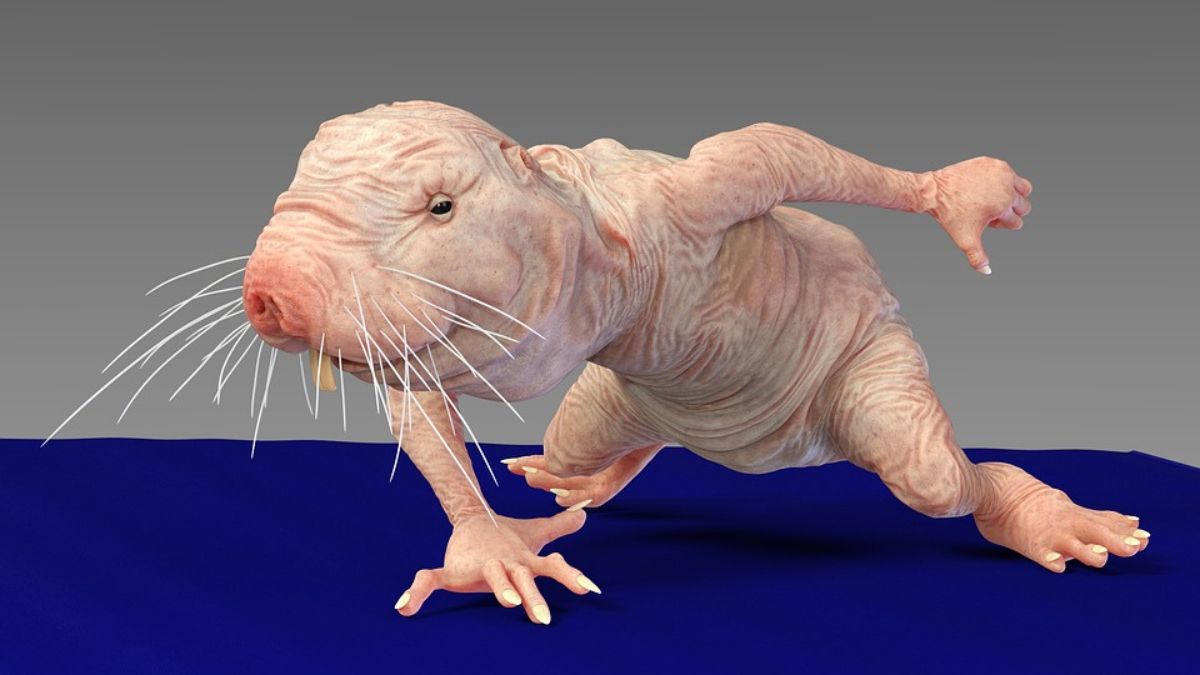Some animals in the animal kingdom are so out of the usual that they defy our understanding of biology as we know it. The naked mole rat (Heterocephalus glaber) is an example of a fascinating species due to its unusual physiology and outstanding social structure, which have captivated scientists and enthusiasts alike. The naked mole rat, found only in the dry parts of East Africa, is the subject of much study and appreciation for the astonishing adaptations it has developed to survive in its underground habitat. Let’s delve into this odd creature’s background and investigate its incredible features.
Physical Characteristics
The naked mole rat’s unusual appearance may turn off some people, but it’s actually very important to biology. Naked mole rats are around 3 to 4 inches in length, and their skin is a wrinkly, hairless, loose-fitting pink to yellowish brown. Its lack of fur is mostly attributable to the fact that it lives underground, where it would become entangled in soil and make it difficult to move through the tight tunnels. In addition, its wide, jutting teeth are perfectly suited for digging, making it look like a rodent.
Life in the Underground
Burrowing their entire lives away, the naked mole rat has perfected the art of tunneling. They live in these tunnels because it is safer than the outside world. Naked mole rats live in dense colonies with an elaborate social system that is unprecedented in the mammalian kingdom.
The social structure of naked mole rats is one of the most fascinating elements of these animals since it is so similar to that of eusocial insects like ants and bees. Each colony has its own queen, a small number of breeding males, and a large number of worker bees who don’t reproduce. While the males fight over who gets to mate with the queen, she is the dominant female and the one in charge of reproduction. The vast majority of mole rats are non-breeding workers who do essential colony maintenance such as tunneling, foraging, and guarding.
Extraordinary Adaptations
In order to thrive in its harsh underground environment, the naked mole rat has evolved a wide variety of remarkable adaptations. Its invulnerability to pain and insensitivity to common irritants is one of its most striking characteristics. Scientists have been perplexed by the mole rat’s apparent immunity to acid and capsaicin (the molecule responsible for the spiciness of chili peppers), prompting research into the animal’s possible uses in human pain therapy.
Naked mole rats also have a very lengthy lifespan relative to their size. Naked mole rats are one of the longest-living rodents, with a life expectancy of up to 30 years. This is significantly longer than the average lifespan of small mammals. Their very long lifespan has sparked investigations into how they age, which could lead to new strategies for prolonging human life and preventing age-related disorders.
Cancer Resistance
Naked mole rats are exceptionally long-lived, and they also have remarkable resistance to cancer. Despite having the same amount of cells as other mammals and being susceptible to DNA damage, they rarely develop tumors. To better understand how to prevent and treat cancer in people, researchers are examining the mole rat’s specialized resistance mechanisms.
Conclusion
The naked mole rat is a fascinating specimen that has long piqued the interest of researchers and conservationists. The hairless look of these cave dwellers, together with their eusocial social structure and extraordinary adaptations, is a monument to the power of evolution. More investigation into their special biochemistry may lead to breakthroughs in areas as diverse as pain relief and cancer prevention for humans. The naked mole rat is a perfect example of how the incredible diversity and adaptations of the natural world continue to astound us.

